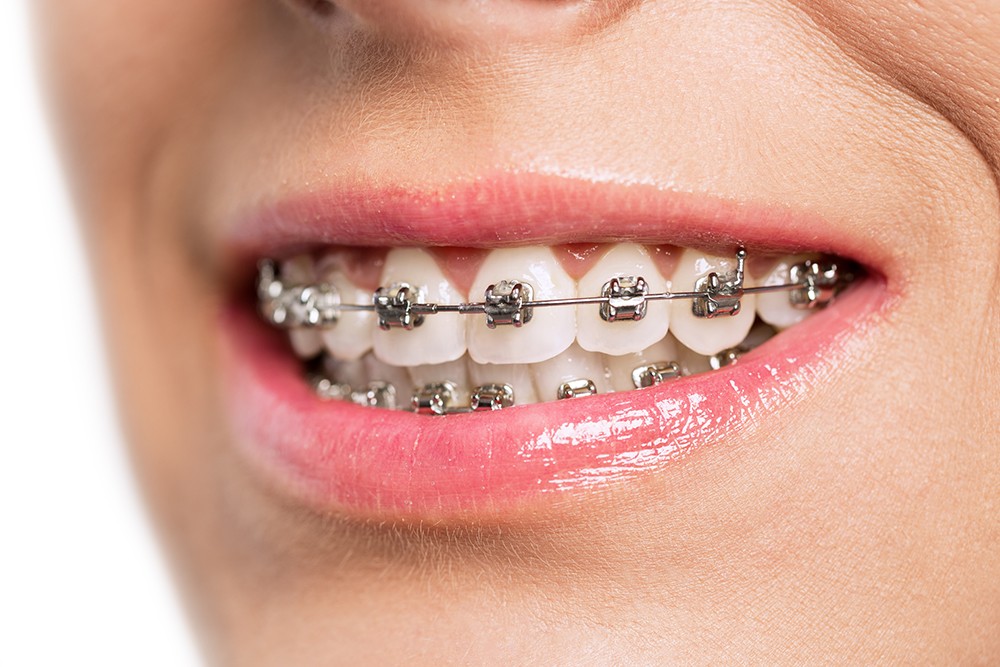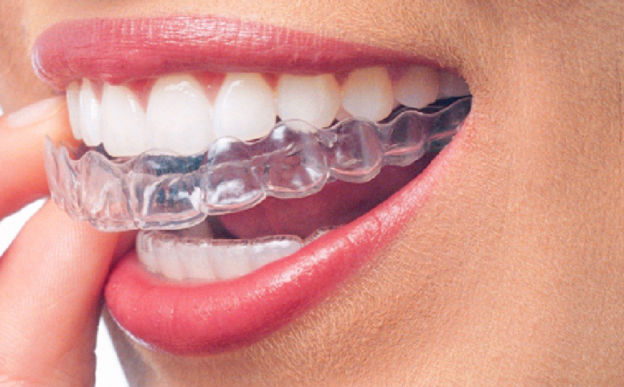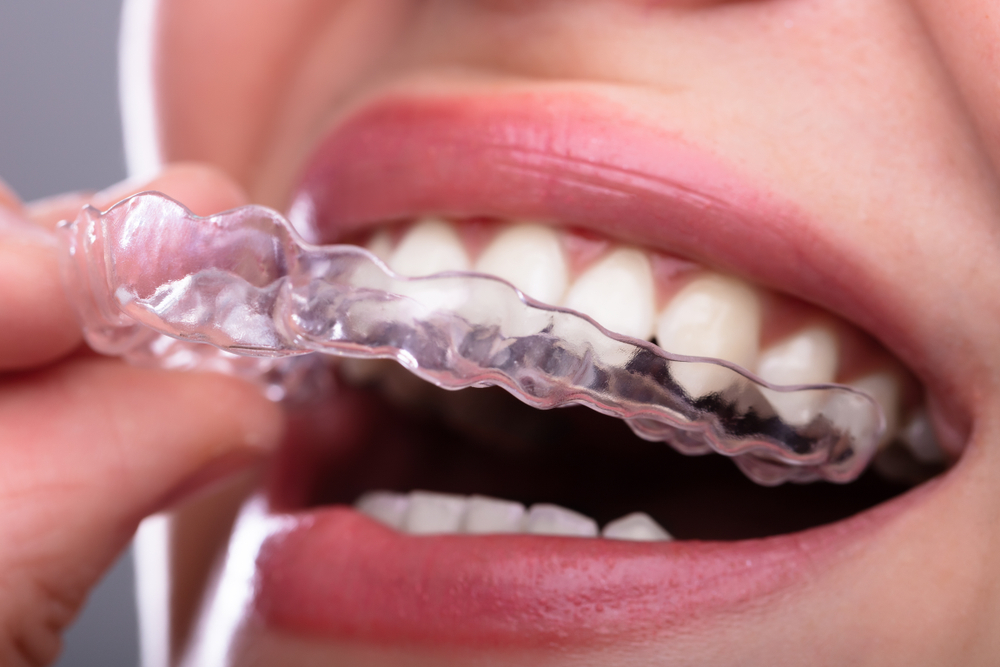Orthodontics: Straightening Teeth for a Beautiful Smile
A straight smile is often considered a sign of health and beauty, but achieving that perfect smile requires more than just brushing and flossing. Many people struggle with crooked teeth, misalignments, or bite issues, which can affect both appearance and function. Fortunately, orthodontics provides effective solutions to straighten teeth and enhance the overall health of your smile. In this article, we’ll explore the world of orthodontics, the different treatment options available, and how they can help you achieve a more confident, aligned smile.

What is Orthodontics?
Orthodontics is a specialized field of dentistry that focuses on diagnosing, preventing, and treating dental and facial abnormalities related to the alignment of the teeth and jaws. The primary goal of orthodontic treatment is to straighten teeth, correct bite issues, and improve overall oral health. Whether you have crowded, crooked, or gapped teeth, orthodontic treatment can provide significant improvements.
Common Orthodontic Issues Treated:
- Crooked teeth: Teeth that are misaligned and appear out of position.
- Crowded teeth: When teeth overlap due to lack of space.
- Gaps between teeth: Large spaces that can cause discomfort or affect speech.
- Overbite/Underbite: Misalignment of the upper and lower jaws, where the top teeth overlap the bottom too much (overbite) or not enough (underbite).
- Crossbite: When the upper and lower jaws don’t align correctly, causing some teeth to sit inside or outside the opposing teeth.
- Open bite: When the upper and lower teeth don’t meet when the mouth is closed.
Why Straightening Teeth is Important
Straightening your teeth goes beyond aesthetics. While a beautiful smile is a major benefit, there are several functional and health-related reasons to seek orthodontic treatment:
- Improved Oral Health: Crooked or misaligned teeth are harder to clean, leading to an increased risk of plaque buildup, gum disease, and tooth decay.
- Enhanced Functionality: Properly aligned teeth allow for better biting, chewing, and speaking. Misalignment can cause discomfort or difficulty in these daily activities.
- Preventive Care: Straight teeth reduce the risk of abnormal wear on teeth, jaw pain, and tooth damage.
- Boosted Confidence: A straighter smile can significantly improve self-esteem and overall confidence, leading to better social interactions and mental well-being.

Types of Orthodontic Treatments
Orthodontics offers a range of treatment options, each designed to meet different needs and preferences. Here are some of the most common types of orthodontic treatments available today:
1. Traditional Metal Braces
Traditional metal braces are the most common and recognizable orthodontic appliance. They consist of metal brackets that are attached to the teeth, connected by wires that gradually move the teeth into the correct position over time. Modern metal braces are smaller and more comfortable than ever, making them a popular choice for both children and adults.
- Pros: Effective for all types of orthodontic issues, durable, cost-effective.
- Cons: Visible, require regular adjustments, may cause some discomfort.

2. Invisalign (Clear Aligners)
Invisalign is a modern alternative to traditional braces, offering a discreet solution for those who want to straighten their teeth without the appearance of metal brackets. Invisalign uses a series of clear, removable aligners that are custom-made for your teeth. The aligners gradually shift your teeth into place, and because they are transparent, they are almost invisible.
- Pros: Virtually invisible, comfortable, removable for eating and cleaning.
- Cons: Requires discipline to wear, not ideal for severe misalignments.
3. Ceramic Braces
Ceramic braces function similarly to traditional metal braces, but they use tooth-colored or clear brackets, making them less noticeable. These braces are a popular option for individuals who want the effectiveness of metal braces but prefer a more aesthetically pleasing solution.
- Pros: Less visible than metal braces, effective for most orthodontic problems.
- Cons: Can be more fragile and prone to staining.
4. Lingual Braces
Lingual braces are similar to traditional metal braces but are placed on the inside of the teeth, making them virtually invisible to others. These braces are custom-made to fit the contours of your teeth and are ideal for those who want a discreet treatment option.
- Pros: Completely invisible from the outside, effective for complex cases.
- Cons: Can be more uncomfortable, require a longer adjustment period.
5. Clear Braces
Clear braces are similar to traditional metal braces, but they use clear or tooth-colored materials for the brackets, making them less noticeable. They offer the same functionality as metal braces but are a more aesthetic option for those who prefer a less visible treatment.
- Pros: Discreet, comfortable, effective.
- Cons: May be more prone to staining than traditional braces.
6. Retainers
Once your teeth are aligned and the braces are removed, a retainer is used to maintain the new position of your teeth. Retainers are custom-made devices that hold your teeth in their new positions until the bone and tissue fully adjust. There are two main types of retainers: fixed and removable.
- Pros: Essential for maintaining results after treatment, customizable.
- Cons: Fixed retainers can be harder to clean; removable retainers require regular use and care.
How Long Does Orthodontic Treatment Take?
The length of time required for orthodontic treatment depends on several factors, including the complexity of the case, the type of treatment, and the age of the patient. On average, orthodontic treatments can last anywhere from 18 months to 3 years. Simple cases may be completed in as little as 12 months, while more complex cases may require longer treatment periods.
Orthodontic Treatment Process
1. Initial Consultation
The first step in orthodontic treatment is a comprehensive consultation with an orthodontist. During this visit, your dentist will assess your oral health, discuss your treatment goals, and recommend the best options for your needs. X-rays, photographs, and impressions of your teeth may be taken.
2. Treatment Planning
After evaluating your condition, your orthodontist will create a customized treatment plan that outlines the steps, timeline, and costs involved. This plan will consider the type of braces or aligners needed, as well as any additional treatments (such as extractions or jaw surgery).
3. Braces or Aligners Placement
Once the treatment plan is in place, your braces or aligners will be fitted. For traditional braces, this involves bonding the brackets to your teeth and attaching the wires. For Invisalign, you will receive your first set of aligners, and you’ll need to wear them for 20-22 hours a day.
4. Regular Adjustments
Throughout your treatment, you will need to visit your orthodontist regularly for adjustments. For traditional braces, this may involve tightening the wires or changing the rubber bands. For Invisalign, you will receive a new set of aligners every few weeks to continue moving your teeth.
5. Completion and Retainers
After the desired tooth alignment is achieved, your braces or aligners will be removed, and you will be given a retainer to maintain the results. Wearing your retainer as directed is crucial for ensuring your teeth stay in their new positions.
FAQs about Orthodontics
Q1: How much do orthodontic treatments cost?
A1: The cost of orthodontic treatment varies based on the type of braces, the complexity of your case, and the duration of treatment. Traditional metal braces are typically the most affordable, while Invisalign and lingual braces can be more expensive. It’s best to consult with your orthodontist for a personalized estimate.
Q2: Can adults benefit from orthodontic treatment?
A2: Yes! Orthodontic treatment is not just for children and teenagers. Many adults seek orthodontic care to improve the appearance and function of their teeth. With advancements in discreet options like Invisalign and clear braces, adults can straighten their teeth without feeling self-conscious.
Q3: Are braces painful?
A3: While braces can cause some discomfort, especially after adjustments, they are generally not painful. Most people experience mild soreness or pressure, which subsides after a few days.
Q4: Can I eat whatever I want with braces?
A4: While wearing braces, it’s important to avoid certain foods that can damage the braces, such as hard candies, sticky foods, and chewy items. Your orthodontist will provide guidelines on what foods are safe to eat.
Q5: How do I clean my braces?
A5: Proper oral hygiene is crucial when you have braces. Brush your teeth after every meal, floss daily, and use a special orthodontic brush or floss threader to clean between the wires and brackets.
Conclusion
Orthodontic treatments offer a fantastic way to straighten your teeth, improve your bite, and enhance your smile. Whether you choose traditional metal braces, clear aligners, or another orthodontic solution, the benefits extend beyond aesthetics to include better oral health and increased confidence. If you’re ready to
improve the alignment of your teeth and enjoy the lifelong benefits of a straighter, healthier smile, schedule a consultation with an orthodontist today!

For more information on orthodontics and to find a professional near you, visit American Association of Orthodontists for resources and expert advice.

